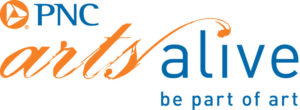Bottle Cork Trivet
Upcycle bottle corks to create trivets for hot pots and pans! Cork is lightweight, flexible, waterproof and naturally resists heat and fire, making it perfect for trivets. Add a splash of color to the corks using fabric dye before assembling to heighten your design.
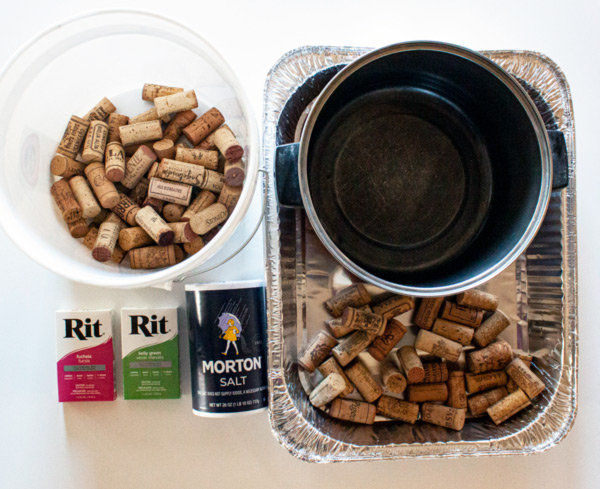
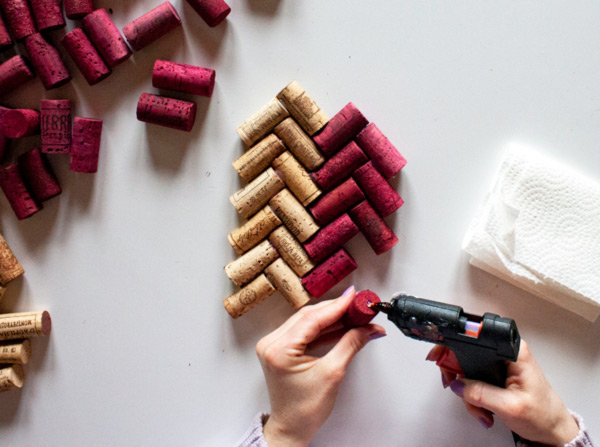
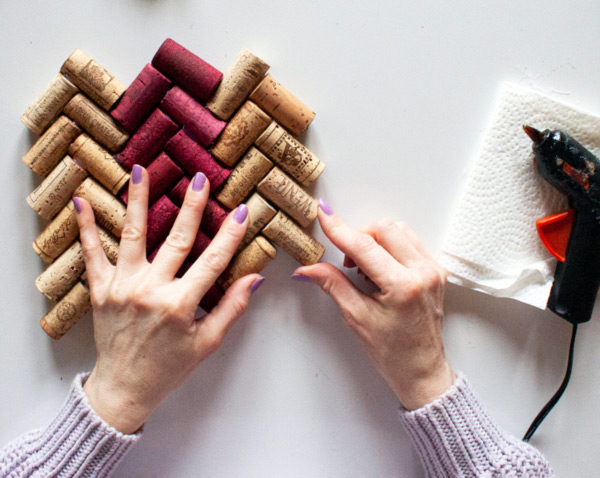
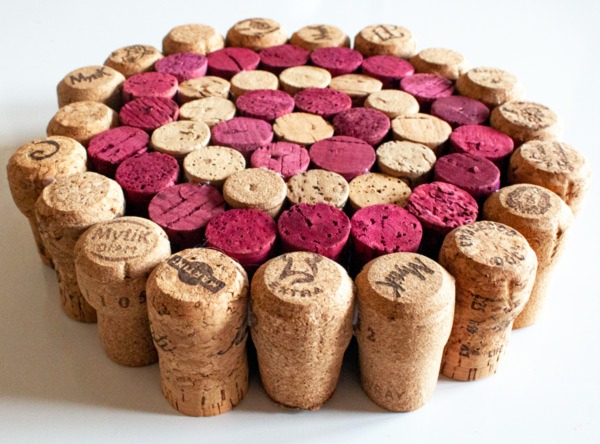
Materials:
- Bottle Corks
- RIT Fabric Dye
- ½ Cup Salt
- Large Pot
- Bucket
- Slotted Spoon
- Aluminum Baking Sheet
- Gloves
- Hot Glue Gun
- Hot Glue Sticks
To color the corks:
Step 1: Fill a large pot with water and boil over the stove.
Step 2: While the water boils, prepare the corks and dye. Fill an old bucket halfway with corks. Put on your gloves!
Step 3: Add ½ cup salt and a dye packet to the bucket.
Step 4: Pour the boiling water into the bucket with the dye salt mixture. Add more hot water from the faucet if needed to submerge the corks.
Step 5: Stir the corks until the dye dissolves, usually between five to ten minutes.
Step 6: Use an old heavy plate to keep the corks submerged in the water after stirring.
Step 7: Allow the corks to soak for 45 minutes or until desired color saturation.
Step 8: Use a slotted spoon to transfer the dyed corks to a waterproof and protected surface to dry. A disposable aluminum baking sheet is perfect.
To form the trivet:
Step 1: Think about the shape, size, and pattern you want to design using the corks. Experiment with different looks until you find one you like best.
Step 2: Cut a piece of thin cork pad, shelf liner, or non-slip rug pad in the desired trivet shape.
Step 3: Begin gluing the bottle corks to the shelf liner in the desired pattern. Add a dab of glue on the side of the corks to adhere them together to make the trivet stronger.
Ideas to take the bottle cork trivets to the next level:
- Go big! Use the same assembly process with undyed corks to create a bath mat.
- Skip the shelf liner. Glue the sides of the cork together into a shape, such as a heart, to create a wall hanging.
Learning and Discussion Questions:
1. What is cork? Cork is sourced from the bark of the cork oak (Quercus suber). The cork oat is a medium-sized, evergreen oak tree. It is native to southwest Europe and northwest Africa. It is the primary source for wine bottle stoppers and cork flooring. Visit this link to learn more about cork.
2. Cork bottle stoppers are punched out from the bark of the cork oak. Watch this video to see the manufacturing process.
Thank you to our sponsor, PNC Arts Alive!, for helping to make this video possible!

